| Listing 1 - 10 of 11 | << page >> |
Sort by
|
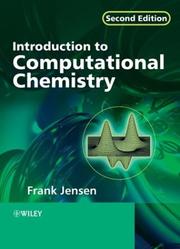
ISBN: 0470011874 9780470011874 0470011866 9780470011867 Year: 2007 Publisher: Chichester, England ; : John Wiley & Sons,
Abstract | Keywords | Export | Availability | Bookmark
 Loading...
Loading...Choose an application
- Reference Manager
- EndNote
- RefWorks (Direct export to RefWorks)
Quantum chemistry --- fysicochemie --- Computer. Automation --- Chemistry, Physical and theoretical --- Data processing. --- Mathematics. --- Mathematics --- Basic Sciences. Chemistry --- Physical Chemistry --- Physical Chemistry. --- Chemistry, Physical and theoretical - Data processing. --- Chemistry, Physical and theoretical - Mathematics. --- Chemistry, Physical and theoretical - Mathematics --- Acqui 2006
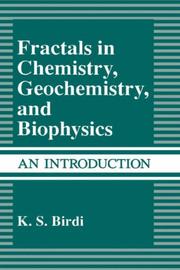
ISBN: 0306441403 148991126X 1489911243 Year: 1993 Publisher: New York London Plenum
Abstract | Keywords | Export | Availability | Bookmark
 Loading...
Loading...Choose an application
- Reference Manager
- EndNote
- RefWorks (Direct export to RefWorks)
General biophysics --- Geochemistry --- Differential geometry. Global analysis --- Fractales --- Fractals --- Chemistry, Physical and theoretical --- Mathematics --- Biophysics --- Chemistry, Physical and theoretical - Mathematics. --- Geochemistry - Mathematics. --- Biophysics - Mathematics. --- Fractals.
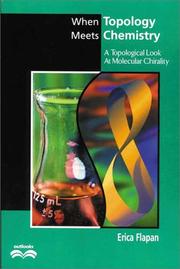
ISBN: 0521664829 0521662540 9780521662543 9780521664820 Year: 2000 Publisher: Cambridge ; New York : Washington, DC : Cambridge University Press ; Mathematical Association of America,
Abstract | Keywords | Export | Availability | Bookmark
 Loading...
Loading...Choose an application
- Reference Manager
- EndNote
- RefWorks (Direct export to RefWorks)
fysicochemie --- Stereochemistry --- Chemistry, Physical and theoretical --- Chirality --- Topology --- Knot theory --- Chimie physique et théorique --- Chiralité --- Topologie --- Théorie des noeuds --- Mathematics --- Notation --- Chimie physique et théorique --- Chiralité --- Théorie des noeuds --- Chemistry, Physical and theoretical - Mathematics
Book
ISBN: 0023840005 9780023840005 Year: 1981 Publisher: New York : London : MacMillan ; Collier Macmillan,
Abstract | Keywords | Export | Availability | Bookmark
 Loading...
Loading...Choose an application
- Reference Manager
- EndNote
- RefWorks (Direct export to RefWorks)
Chemistry, Physical and theoretical --- Mathematics --- Mathématiques --- Analyse mathématique --- Mathematical analysis --- Mathématiques --- Mathematics. --- Analyse mathématique --- Mathematical analysis. --- Chemistry, Physical and theoretical - Mathematics --- Algebre classique --- Informatique --- Equations algebriques --- Programmation
Book
ISBN: 9781118825990 1118825993 Year: 2017 Publisher: Chichester, UK ; Hoboken, NJ : John Wiley & Sons,
Abstract | Keywords | Export | Availability | Bookmark
 Loading...
Loading...Choose an application
- Reference Manager
- EndNote
- RefWorks (Direct export to RefWorks)
"Introduction to Computational Chemistry", 3rd edition, provides a comprehensive account of the fundamental principles underlying different computational methods. Fully revised and updated throughout to reflect important method developments and improvements since publication of the previous edition,
Chemistry, Physical and theoretical --- Chimie physique et théorique --- Data processing. --- Mathematics --- Mathématiques --- Informatique --- Mathématiques. --- Informatique. --- Data processing --- Chemistry, Physical and theoretical - Data processing --- Chemistry, Physical and theoretical - Mathematics --- Chimie physique et théorique --- Mathématiques.
Book
ISBN: 0333492986 0333492978 1349213578 9780333492987 Year: 1991 Publisher: London : MacMillan,
Abstract | Keywords | Export | Availability | Bookmark
 Loading...
Loading...Choose an application
- Reference Manager
- EndNote
- RefWorks (Direct export to RefWorks)
Chemistry, Physical and theoretical --- Mathematics. --- 512.54 --- #WSCH:AAS1 --- Groups. Group theory --- 512.54 Groups. Group theory --- Group theory --- Groups, Theory of --- Substitutions (Mathematics) --- Algebra --- Mathematics --- Quantum chemistry --- fysicochemie --- Chemistry, Physical and theoretical - Mathematics. --- CHEMISTRY, PHYSICAL AND THEORETICAL --- GROUP THEORY --- MATHEMATICS
Book
ISBN: 0408700467 0408700475 9780408700474 9780408700467 Year: 1971 Publisher: London : Butterworths,
Abstract | Keywords | Export | Availability | Bookmark
 Loading...
Loading...Choose an application
- Reference Manager
- EndNote
- RefWorks (Direct export to RefWorks)
541.1 <083> --- #WSCH:FYS3 --- Physical chemistry--Tabellen. Lijsten. Indices --(niet-bibliografische) --- Basic Sciences. Chemistry --- Physical Chemistry --- Physical Chemistry. --- 541.1 <083> Physical chemistry--Tabellen. Lijsten. Indices --(niet-bibliografische) --- thermochemie --- Chemistry, Physical and theoretical --- Mathematics --- Problems, exercises, etc. --- Physicochemistry --- fysicochemie --- berekeningen --- elektrochemie --- Chemical kinetics --- Cinétique chimique --- Chemical reactions. --- Réactions chimiques. --- Thermodynamique --- Thermodynamics --- Computational chemistry. --- Chemistry, Physical and theoretical - Mathematics - Problems, exercises, etc.
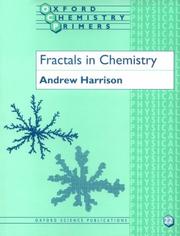
ISBN: 0198557671 9780198557678 Year: 1995 Volume: 22 Publisher: Oxford : Oxford University Press,
Abstract | Keywords | Export | Availability | Bookmark
 Loading...
Loading...Choose an application
- Reference Manager
- EndNote
- RefWorks (Direct export to RefWorks)
The patterns of frost on a cold window, eroded landscapes, and particles grown in an aerosol all have forms that are conventionally regarded as irregular, with little or no symmetry. In Fractals in Chemistry, the reader is introduced to the fractal dimension, a concept that allows for a unified description of such diverse and irregular objects, and implies that they all possess heretofore unperceived symmetries. The text explains how the growth of such objects is controlled by similar, simple processes, and how modest experiments bring to life the principles involved. Topics include fractal forms, fractal growth, characterizing fractals, and chemistry in fractal environments. Throughout, the text emphasizes the relevance of fractal concepts to the structure and chemistry of porous solids and to the growth of polymers and colloids in liquid and gaseous phases. Concise and easy-to-read, this book is ideal for students and researchers in chemistry, physics, and materials science.
Fractals --- Chemistry, Physical and theoretical --- Mathematics --- Fractals. --- Mathematics. --- 544.2 --- 54 --- chemie (scheikunde) --- fractalen --- fysische chemie --- Fractal geometry --- Fractal sets --- Geometry, Fractal --- Sets, Fractal --- Sets of fractional dimension --- Dimension theory (Topology) --- chemie. scheikunde --- Chemistry, Physical and theoretical - Mathematics --- CHEMISTRY, PHYSICAL AND THEORETICAL --- FRACTALS --- MATHEMATICS
Book
ISBN: 1461460247 1461460255 1283909464 9781461460244 Year: 2013 Publisher: New York, NY : Springer New York : Imprint: Birkhäuser,
Abstract | Keywords | Export | Availability | Bookmark
 Loading...
Loading...Choose an application
- Reference Manager
- EndNote
- RefWorks (Direct export to RefWorks)
The self-avoiding walk is a mathematical model that has important applications in statistical mechanics and polymer science. In spite of its simple definition—a path on a lattice that does not visit the same site more than once—it is difficult to analyze mathematically. The Self-Avoiding Walk provides the first unified account of the known rigorous results for the self-avoiding walk, with particular emphasis on its critical behavior. Its goals are to give an account of the current mathematical understanding of the model, to indicate some of the applications of the concept in physics and in chemistry, and to give an introduction to some of the nonrigorous methods used in those fields. Topics covered in the book include: the lace expansion and its application to the self-avoiding walk in more than four dimensions where most issues are now resolved; an introduction to the nonrigorous scaling theory; classical work of Hammersley and others; a new exposition of Kesten’s pattern theorem and its consequences; a discussion of the decay of the two-point function and its relation to probabilistic renewal theory; analysis of Monte Carlo methods that have been used to study the self-avoiding walk; the role of the self-avoiding walk in physical and chemical applications. Methods from combinatorics, probability theory, analysis, and mathematical physics play important roles. The book is highly accessible to both professionals and graduate students in mathematics, physics, and chemistry. .
Chemistry, Physical and theoretical -- Mathematics. --- Self-avoiding walks (Mathematics). --- Statistical physics. --- Self-avoiding walks (Mathematics) --- Mathematics --- Physical Sciences & Mathematics --- Mathematical Statistics --- Chemistry, Physical and theoretical --- Mathematics. --- Physics --- Statistical methods --- Mathematical physics. --- Probabilities. --- Combinatorics. --- Probability Theory and Stochastic Processes. --- Mathematical Applications in the Physical Sciences. --- Mathematical Physics. --- Mathematical statistics --- Random walks (Mathematics) --- Distribution (Probability theory. --- Combinatorics --- Algebra --- Mathematical analysis --- Distribution functions --- Frequency distribution --- Characteristic functions --- Probabilities --- Physical mathematics --- Probability --- Statistical inference --- Combinations --- Chance --- Least squares --- Risk
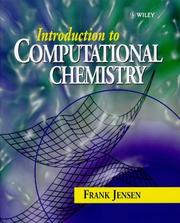
ISBN: 0471980854 0471984256 9780471980858 Year: 1999 Publisher: New York, NY : John Wiley,
Abstract | Keywords | Export | Availability | Bookmark
 Loading...
Loading...Choose an application
- Reference Manager
- EndNote
- RefWorks (Direct export to RefWorks)
519.6:54 --- Chemistry, Physical and theoretical --- -Chemistry, Physical and theoretical --- -#WSCH:AAS2 --- #WSCH:FY14 --- #WSCH:MODS --- Chemistry, Theoretical --- Physical chemistry --- Theoretical chemistry --- Chemistry --- 519.6:54 Computational mathematics. Numerical analysis. Computer programming-:-Chemistry. Mineralogical sciences --- Computational mathematics. Numerical analysis. Computer programming-:-Chemistry. Mineralogical sciences --- Data processing --- Mathematics --- Chimie physique et théorique --- Notation --- Chimie physique et théorique --- #WSCH:AAS2 --- Physicochemistry --- fysicochemie --- Computer. Automation --- Pharmacology. Therapy --- Data processing. --- Mathematics. --- Informatique --- Chemistry, Physical and theoretical - Data processing. --- Chemistry, Physical and theoretical - Mathematics.
| Listing 1 - 10 of 11 | << page >> |
Sort by
|

 Search
Search Feedback
Feedback About
About Help
Help News
News